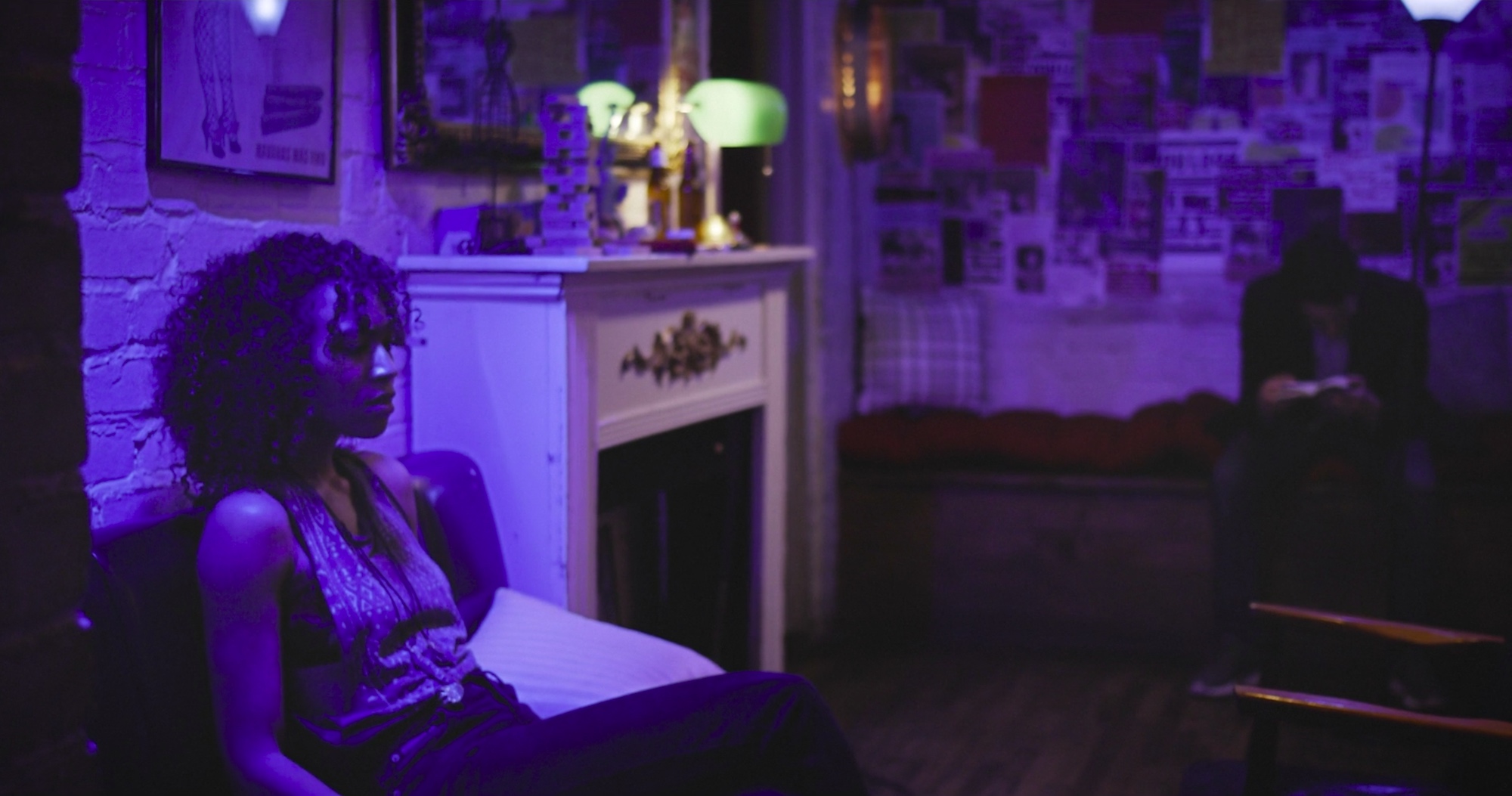
The scope of film as an art form is only limited by the imagination. OK, the budget too… But something magical happens when restrictions are introduced and the narrative is stripped back to its bare bones – inviting the audience to become an active participant in the story and discover what is cleverly concealed within it. It also allows filmmakers to truly shine in their craft, without utilising their trusted toolkit of effects. With the entire short set in a small, dimly-lit backstage room, Green, directed by Kylie Murphy, follows a stand-up comedian (Iman Richardson) as she gets bumped when a famous comic returns to the stage after sexual misconduct allegations. Using a sharp focus on the dialogue and performances to explore the culture of power and abuse in the entertainment industry, the eleven minute directorial debut is a masterclass in stirring up dramatic tension with just a few key ingredients. The result is a funny and frustrating slice of cinematic brilliance which, just like the truth often can be, is a little hard to swallow. We chatted with Murphy about her experience of stepping down as a DOP and stepping up as a director, as well as solving logic puzzles, dealing with unforeseen weddings and plenty more.
Was there a specific moment, when the Harvey Weinstein scandal broke out and the Me Too movement was born, during which you felt compelled to make Green?
I believe it initially came from coverage of Louis CK dropping in to perform after those months of silence. When I heard the applause from that set, it was kind of like, oh. We’re gonna be stuck on this tilt-a-whirl forever. It felt so thick, like total stagnation. Even if there was dissent in the room, it was quite literally drowned out by what sounds like complete acceptance. That seemed to embody a lot of what felt frustrating about the movement for me, the part where things show no outward signs of moving.
I’m curious about how you shaped the two female characters in the film – from the way they were written, to the casting process and finally to the direction you gave the actors.
I knew that their friendship was going to anchor the film. Each character has a different place in this mini hierarchy. I thought it was important that CJ, who is a relative newcomer, have a friend in Maggie, who is more of a veteran. In the rehearsal process, we talked about how if Maggie was in the room with David and Mike, she would have levelled them out. Not necessarily changing the outcome, but shifting the dynamic. She also just has more leverage as a white person in the predominantly white space of comedy. Establishing the dynamic between the two pays off in the end when you see how differently they resign themselves to the final moment.
As for casting, the only person I didn’t know personally before shooting was Iman. Kate and Steve, who play Maggie and David, I’ve actually known for a few years from babysitting their son. They are both wonderfully talented improvisers and writers from the Chicago world. After holding a beloved Paw Patrol toy hostage, I forced their hand and they had to agree. Luke, who plays Mike, is a performer and writer as well as my brother-in-law and I can attest here he is playing the Hyde to his sweet Jekyll self.
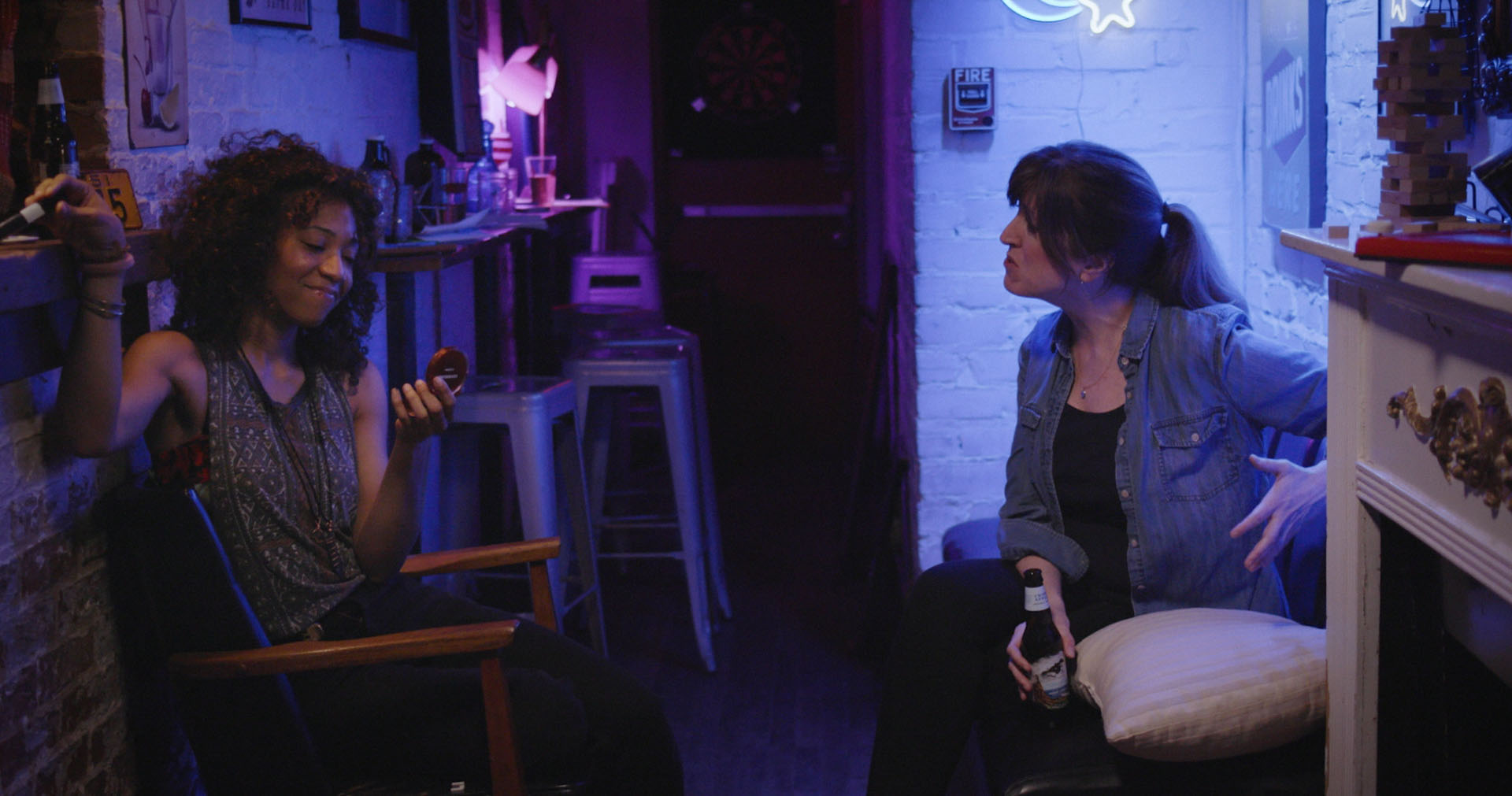
For the character of CJ, I held auditions and reached out to a bunch of New York actors/improvisers via email. I found Iman on the UCB page. She wasn’t working on student productions any more, so I was lucky she gave me a chance and read the script. A few seconds into her self-tape, I knew she was right. She could walk that line between comedic and dramatic moments with incredible grace. I didn’t have the chance to do a chemistry read with Kate and Iman beforehand, but after the first rehearsal it was clear it was working.
We worked through a lot of the direction in rehearsal – establishing their dynamic and then playing within that. On set, there was some improv with Maggie and CJ’s characters to led into or out of an exchange, which definitely adds something breezy and naturalistic to their relationship. A few of these moments are in the final film. My favorite is at the end after Kate smiles. That was the final scripted moment but they would always keep going after that beat.
The idea that this conversation all revolves around the enterprise of providing laughter and joy and escape adds another layer.
Green deals with stand-up comedy and the gender dynamics and power abuse within. Why did you focus on that particular area of the entertainment industry?
So far the projects I’ve made have all been comedies, usually rooted in some sort of parody or satire. Comedy is naturally what I am drawn to, but this project is definitely the most functionally dramatic or grounded out of anything I’ve made. It’s also interesting to look at comedy in this context. Because the material is so personal and self-referential, the art/artist line is at its blurriest and it becomes increasingly hard to separate the two. The idea that this conversation all revolves around the enterprise of providing laughter and joy and escape adds another layer. I hope that even though it is specific to comedy, the dynamics in this film could be picked up and placed claw-machine-style into different settings and different parts of the industry. I didn’t want to give this comic a name because there are so many people he can be and every few months there seems to be a new contender. Hopefully that lends some universality to the film.
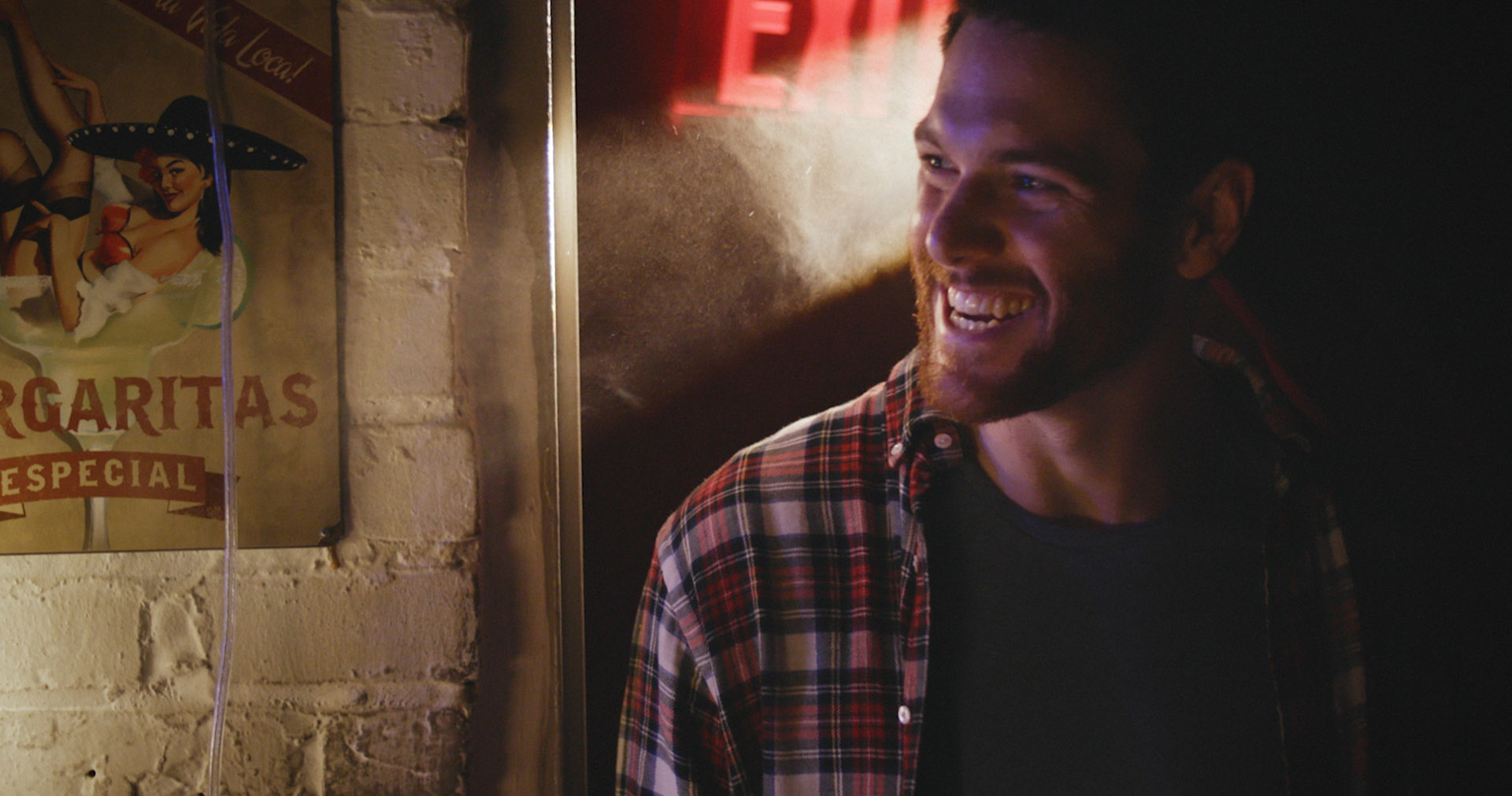
The setup of the film is quite stripped back, and all the action takes place in one small room, allowing the dialogue and performances to take centre stage. Why was that important to you?
When approaching a subject this big, it can be overwhelming. Setting parameters to operate within can really help you get moving. I’ve always loved logic puzzles because all of the information is there and it works out in the end, but it’s up to you to get it there. From the start, I felt like I had the information – the room, the four people, the one scene, the beginning and the ending points. But how does it work? I love that kind of challenge. As for the film itself, I think these parameters help distill something so daunting into something small and human that you can hopefully connect with.
I’ve also always been most comfortable writing dialogue. There was another challenge – can the piece sustain itself through dialogue alone? Of course, so much of that rests on the actors and I felt so lucky that these people agreed to even make eye contact with me. In a way, it kind of felt like the first time I was being a ‘serious person’ working with actors in earnest, as opposed to replicating or deriving a performance from something else in service of satire or sketch. Plus, I had to find the least-ventilated and most-cramped room possible with the most scantily clad ladies on the walls because art is suffering, or something like that.

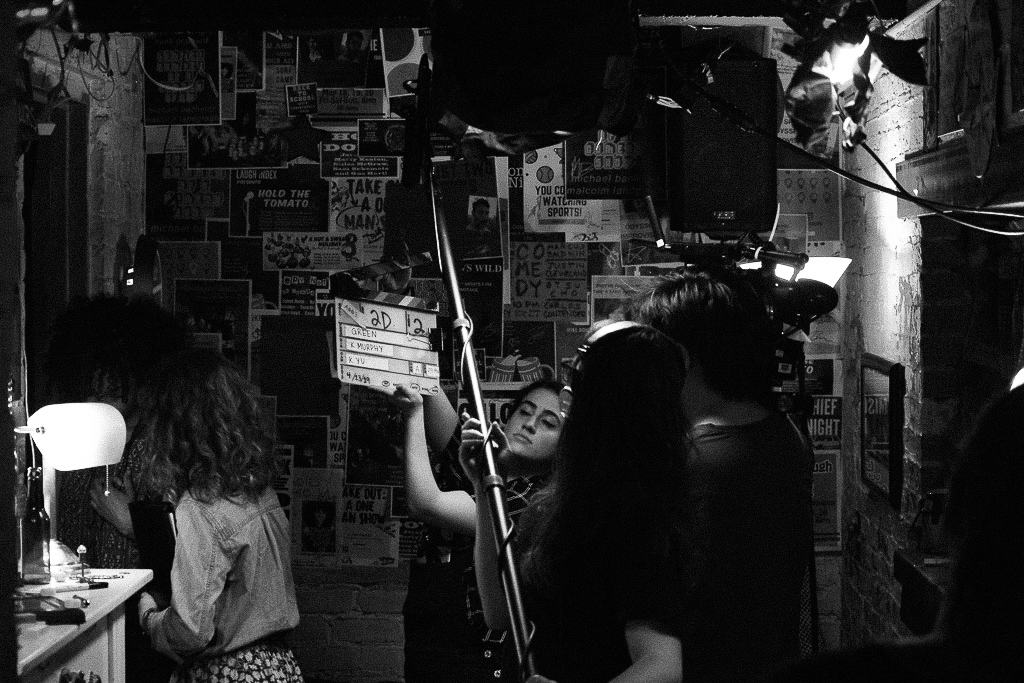


Over the past few years our screens have been flooded with films that deal with the same topic. What do you think Green brings to the audience, that they haven’t seen before and what do you hope they’ll take away from the film?
I wanted to explore one of the stories that might not be hyper-visible. It’s tangential, a ripple effect outward. What are the unseen consequences that happen behind the curtain that we don’t know about? What does it mean for someone like CJ, who doesn’t know him personally?
I was reading a story the other day from the perspective of crew members and stunt actors on Buffy and Angel. There are just so many people this reaches that we might not initially consider or see, because it’s not an isolated incident, it’s an environment. And I always wonder how it affects their feelings about their career, their feelings about what it’s like to work under someone or be smaller than someone. How can something grow in that environment? I also hope that this film comes across as a celebration of the buoyancy required to survive these institutions. I feel like sometimes I am stuck in a room making jokes about Scientology in order to stay afloat. I want those final moments with CJ and Maggie to communicate that there is so much hard hope you have to invent for yourself to get through it.
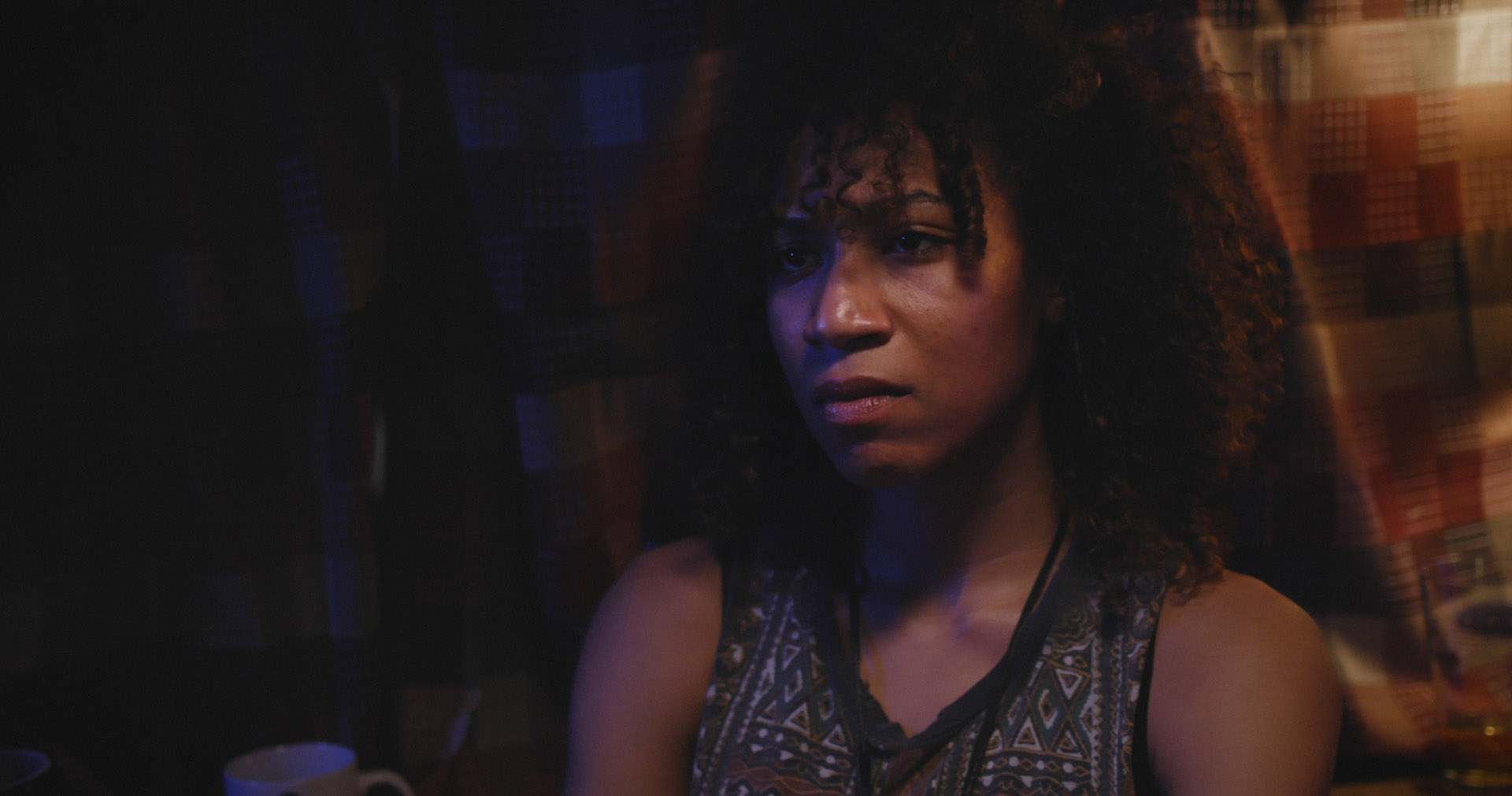
Do you think we have got better at having honest and open discussions about sexual assault over the past few years, or do we have a long way to go yet?
I definitely think there is more space for people to share stories. Projects like Never Rarely Sometimes Always or I May Destroy You are being made that might not have been made before. Not that the stories weren’t there, but the depth of listening wasn’t being assumed in an audience. Now, I think that studios and production companies might be acknowledging that there is room for this whole range of nuances and angles. That feels hopeful. But it also sometimes feels harsher, more volatile. As more stories come out, now there’s this armor up against any type of accusation — an armor against accountability, or what is perceived as cancel culture. It detaches from the specifics of the person and story and becomes rote — a war waged against an idea, in service of protecting a norm reliant on white supremacy and patriarchy. Even with the new documentary Allen v. Farrow, this man still has defenders. I’m just wondering, is your heart really in it any more, all these years later? Is your Blu-ray of Wonder Wheel that sacred?
When approaching a subject this big, it can be overwhelming. Setting parameters to operate within can really help you get moving.
Something similar happened recently with the Gina Carano story. A whole group was rallying behind this person and her anti-Semitic comments — not because she was initially seen as particularly great or beloved in her role — but because she became emblematic in their fight. When you look at that reflex ready to respond against any unwanted voice or criticism, no matter the circumstance, it can be disheartening.
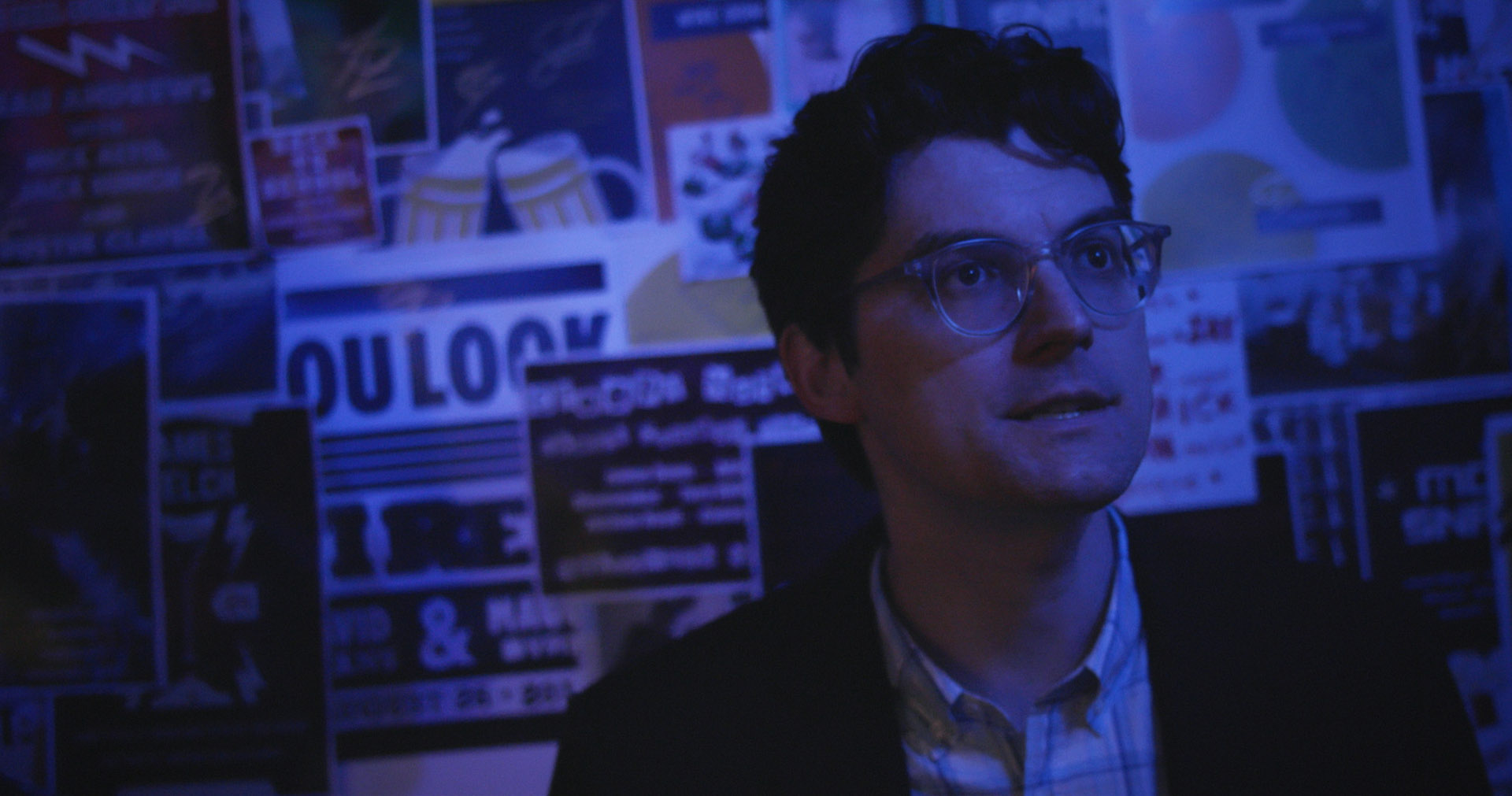
This is the first time you’ve directed a film project, where you weren’t also a DOP on it. How did you find the experience?
It was weird and also great. Going into the day, I was naively convinced I was going to operate some shots, but before I knew it the day was over and I never touched the camera. Which was for the best! It allowed me to focus on just directing, which is something I am still trying to define. I had only ever done many things at once on set, and now I just had the one thing and was figuring out where that started and ended.
I had a really collaborative relationship with the DP, Kevin Yu. I shot two of his films the previous year and now we were reversing roles. The two of us have pretty different visual and storytelling instincts so it is always exciting to work with someone who doesn’t think the same way as you. Plus having a level of trust and friendship shorthand is key. It was also the first time I was directing with a crew of this size, which seemed massive, although we could probably all ride a medium-sized rollercoaster at the same time.



Did the shoot go smoothly or were there a few bumps along the way?
Something I forget when watching the final film is the chaos of the production. The owner of the bar we shot at called me the week prior — they forgot they had booked a wedding (a wedding!) that Sunday and I was only allowed to have Saturday. And with this being a student production, you are locked into those dates with whoever is available, so we had to shoot in one day. The lie I tell myself is that the time-sensitive nature of the shoot was in fact better because it benefited the time-sensitive nature of the film.
With everything rigged beforehand, we could go the whole way through chronologically without stopping for adjustments.
We got everything done thanks to the efficiency of the crew, rehearsals we had done prior, and consistent schedule making and remaking by an ingenious assistant director. I knew as a DP that the only way it was going to work was to rig everything beforehand. That’s something I wanted anyway – I know it’s the nature of film, but I still think it’s a miracle any actor can deliver a performance with a flag being secured two inches from their head by someone (me) who is sneaking bites of an apple (granny smith) between takes. With everything rigged beforehand, we could go the whole way through chronologically without stopping for adjustments.
I also wanted the opportunity to do these long takes with a roving camera responding to the actors, which definitely heightened the energy. It was just me, the DP, the boom op, and sometimes the AD inside the room. We had a remote follow focus so everyone else was watching on a monitor outside in the main bar. I remember walking into that room at the beginning of the day when everyone was setting up — G&E rigging the lights and the art department hanging the posters, which were designed by the PD and every family member and friend I had who knew Canva. Camila, the AD and one of my dearest friends, guided me out of the room and towards some banana bread. She said in her gentle directness, “You’re in their way.” It was kind of astonishing, but she was right.
Just two years earlier, before I transferred to NYU, I was making my first film with zero experience or exposure to filmmaking. For one scene, I balanced a boom mic my friend let me borrow from the community college while operating and reading the off-camera character’s lines, in a room in my house that I decorated with every thrifted blueberry item I could find in the surrounding counties (it makes sense in context, swear). And now I was surrounded by these groups of people working in a lyrical dance and I was in their way.



What’s next for you?
I was supposed to shoot my final film at NYU last year. It’s actually a follow-up to Green called Gold, and it picks up a year later when The Comic has returned from a successful comeback tour. It felt like since shooting Green, the questions were evolving to something stickier. Not so much, does this person come back or not (they always do) but how do we live and create in the same world as them? I also felt like I had grown as a filmmaker and wanted to approach this story in a new way. Gold is largely a conversation between CJ and The Comic, who we get to meet in person. We were supposed to shoot last April, but then what Kate and Steve’s kid calls “the big germ” hit, and it’s been put on hold until it’s as safe as possible to shoot again.
In the meantime, I’m virtually shooting a new project over Facetime in the coming weeks. It’s about a meditation guide living alone in the pandemic. Another woman trapped in a room by forces larger than her. Feel free to psychoanalyze!

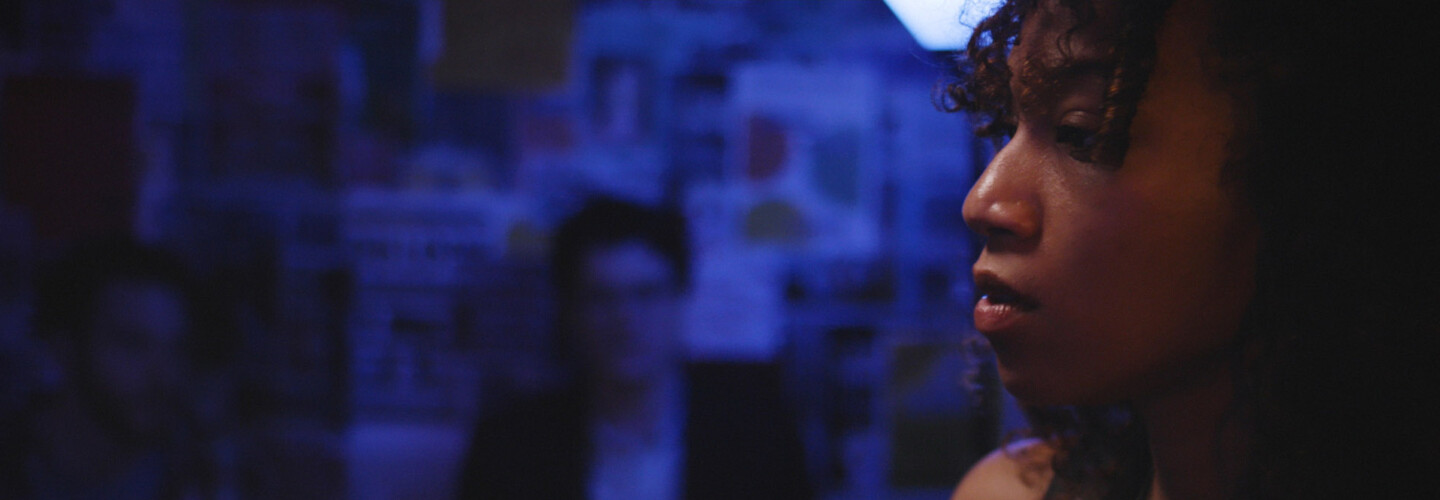

Great interview & film!
A fantastic piece and an insightful interview!